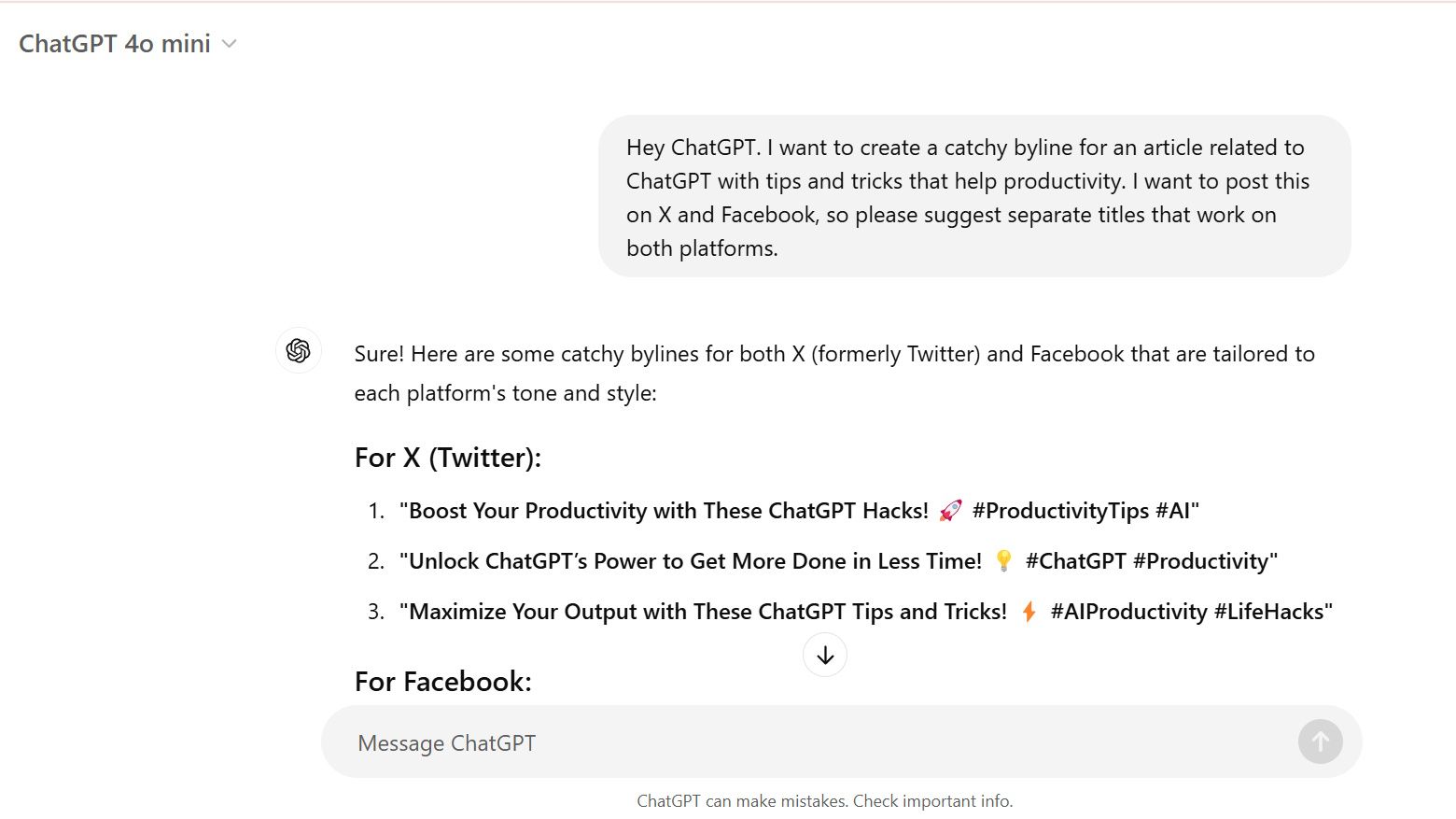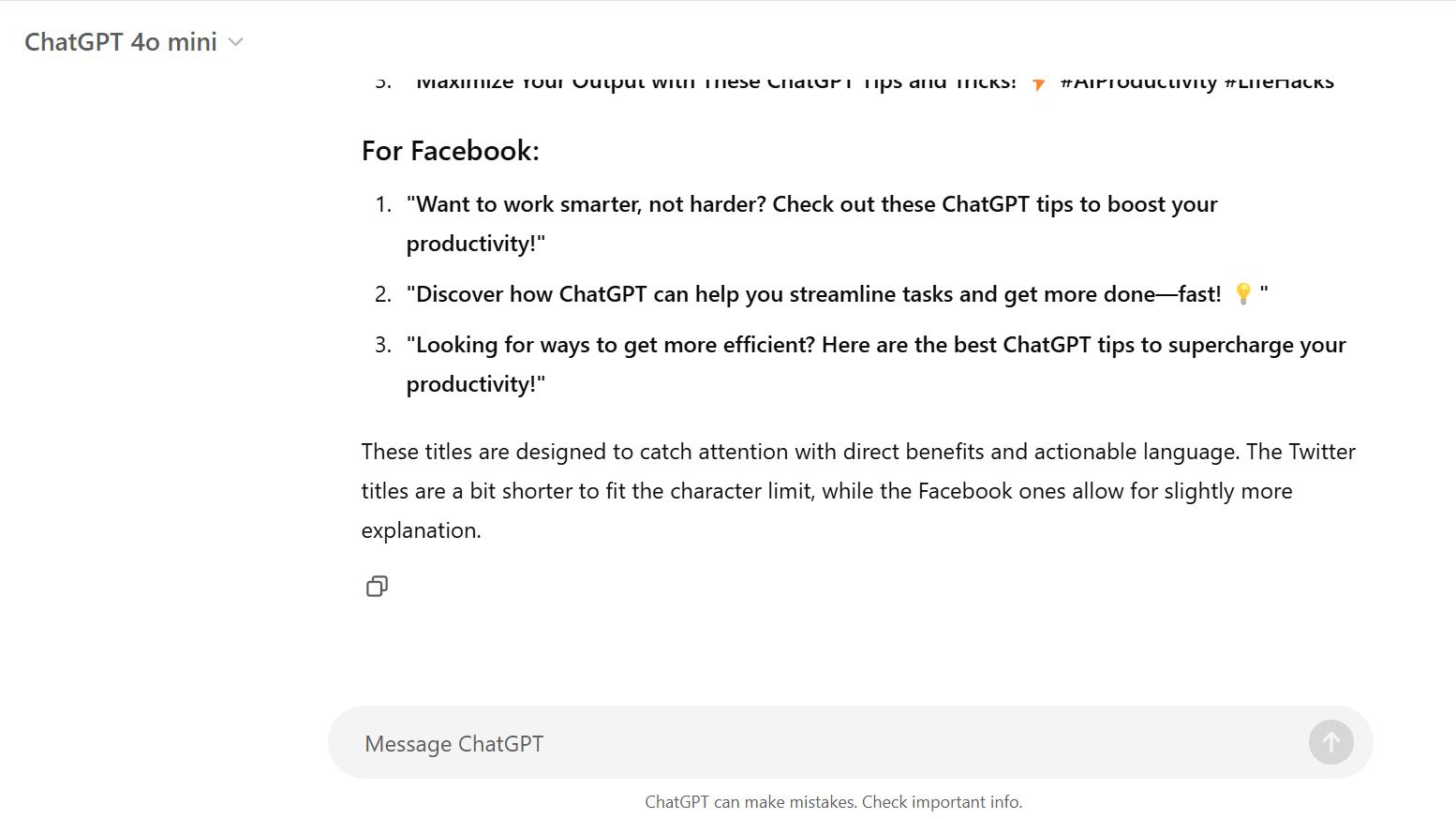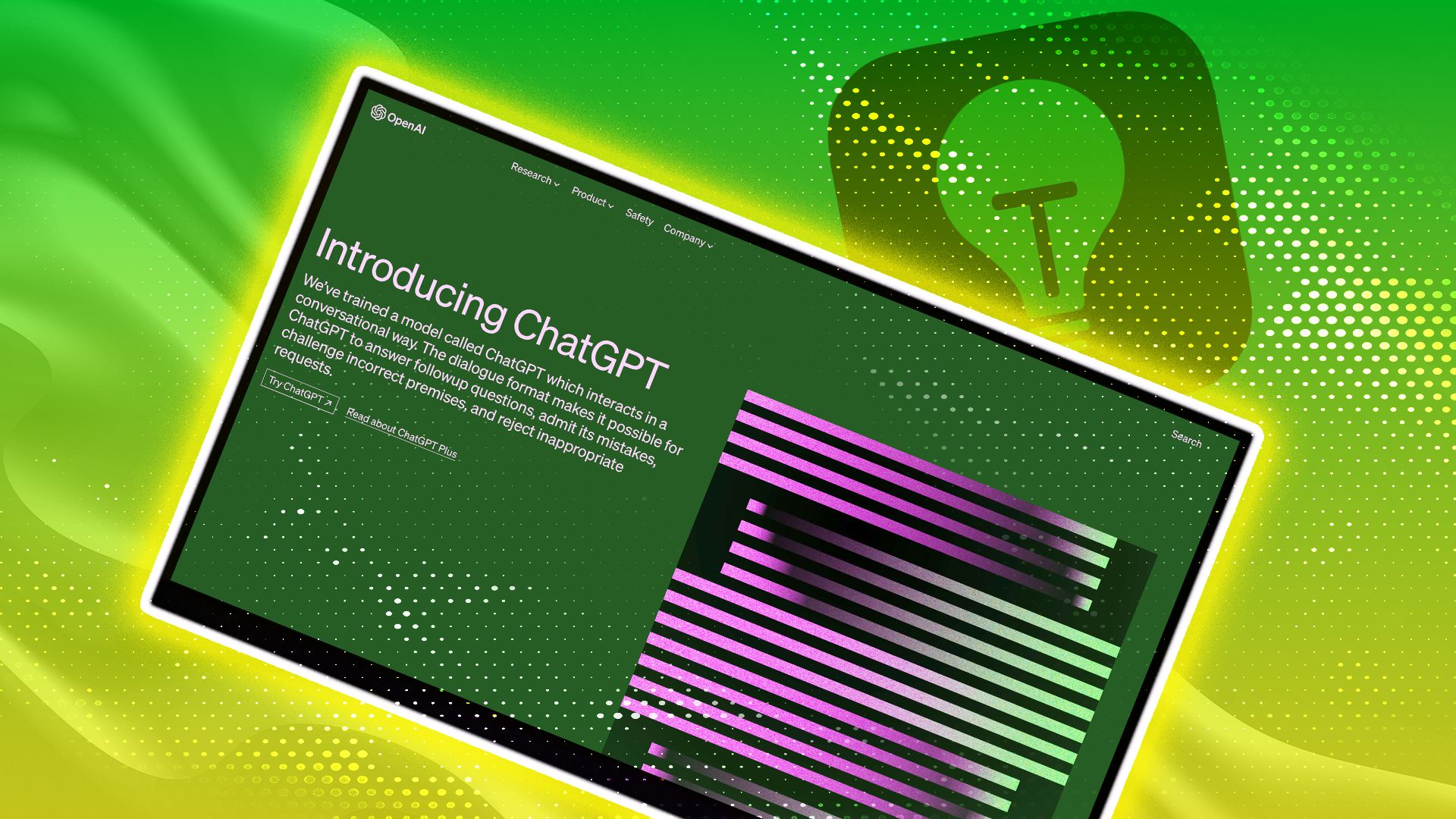
The ChatGPT4 AI chatbot provides many useful functions, like understanding languages, extracting information, and transcribing images, to help with your day-to-day tasks. Accessing the website and app for guidance on any handy Chromebook, smartphone, or tablet is easy. Whether you need assistance with your thesis or want to improve your workflow, ChatGPT has plenty of tools to uncover. Our tips and tricks guide walks you through the best productivity hacks you’ll find with ChatGPT.
While ChatGPT is a conversationalist AI trained in natural language processing,
OpenAI warns
that “ChatGPT is sensitive to tweaks to the input phrasing or attempting the same prompt multiple times.” You may need to use multiple prompts or approach the prompt from another angle to get a suitable answer.
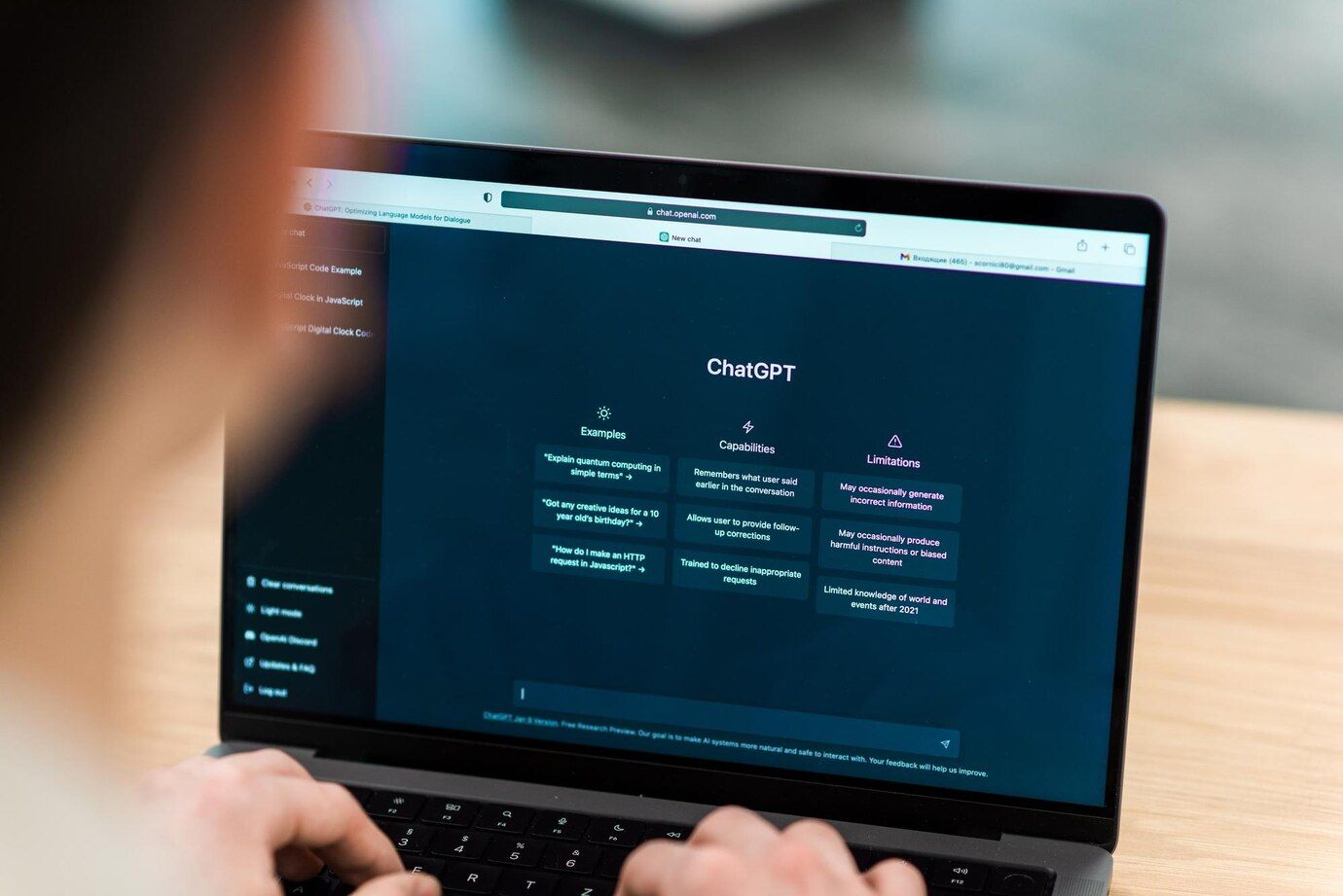
Related
What is ChatGPT?
Learn what ChatGPT is, how it works, what you can do with it, and how much it costs to use OpenAI’s most advanced AI chatbot
8 Use ChatGPT to help with debugging
Practice programming languages and concepts
ChatGPT is valuable for debugging. You can ask ChatGPT to review a line of code or a whole code block. ChatGPT has extensive programming training. You can use simple prompts to ask for feedback or have it walk you through solutions. To get started with ChatGPT’s debugging assistance, try the following prompt:
- Open ChatGPT.
- Copy and paste the code inside the Prompt box.
- Write the error you see and ask it for step-by-step critical reasoning.
- Wait for ChatGPT’s response.
If ChatGPT’s suggested solution doesn’t work, ask ChatGPT for another approach. ChatGPT is still learning, so your experiences may vary.
7 Plan a project with ChatGPT
Manage deadlines and project goals with ease
When planning for a work or school project, it isn’t easy to know where to start. You can use ChatGPT to break down a general topic into subtopics to get you started. When sending in prompts, provide the who, what, when, where, and why, beginning with the project goal and the intended purpose, platform, or organization. To get started, try the following:
- Open ChatGPT.
- Use the prompt: Can you help plan a project for me?
- Follow ChatGPT’s instructions to provide the needed details.
ChatGPT breaks it down into an outline, which you can use as a project template. After drafting the project with ChatGPT, copy the text into any word processor or open a Google Doc. You can also ask ChatGPT to put this in a structured format like Plain Text (.txt), Markdown (.md), or HTML.
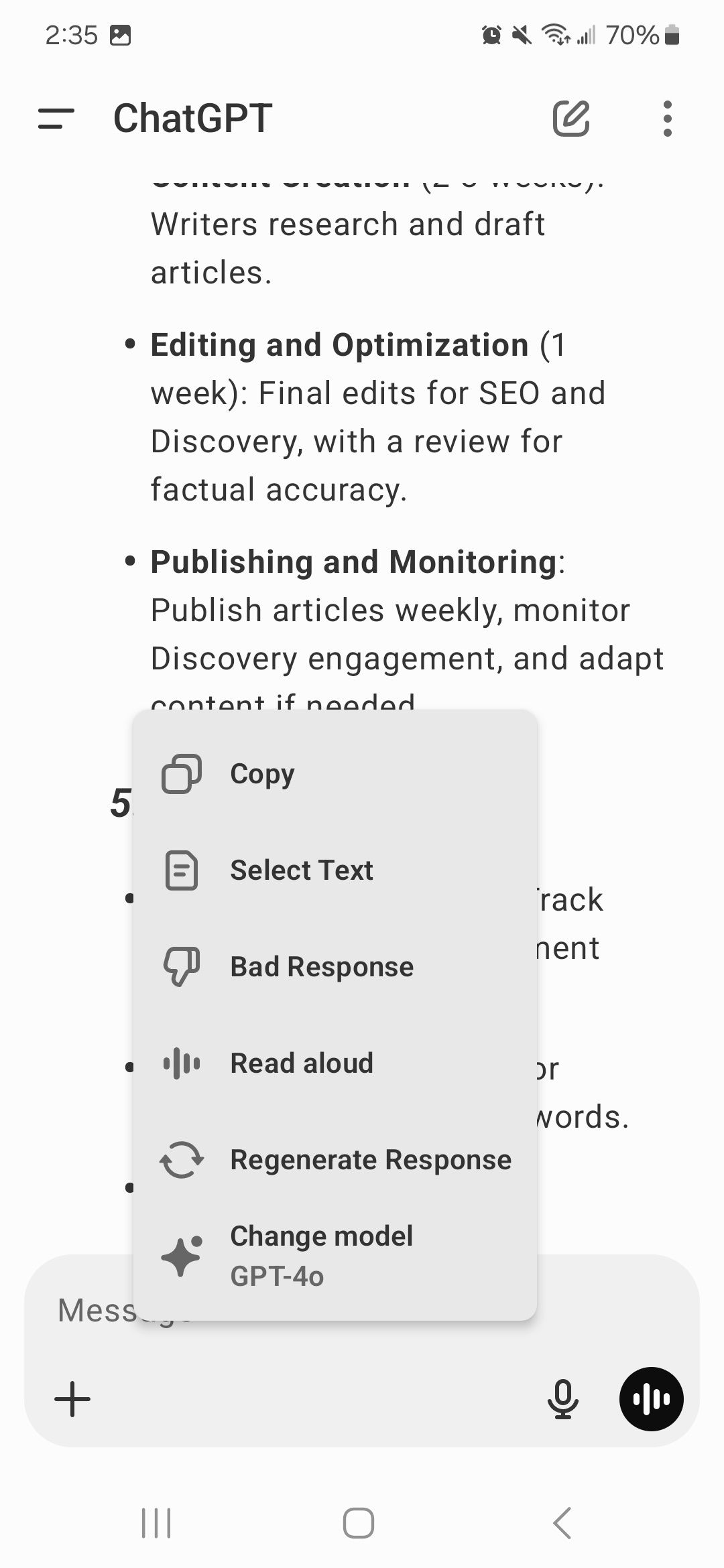
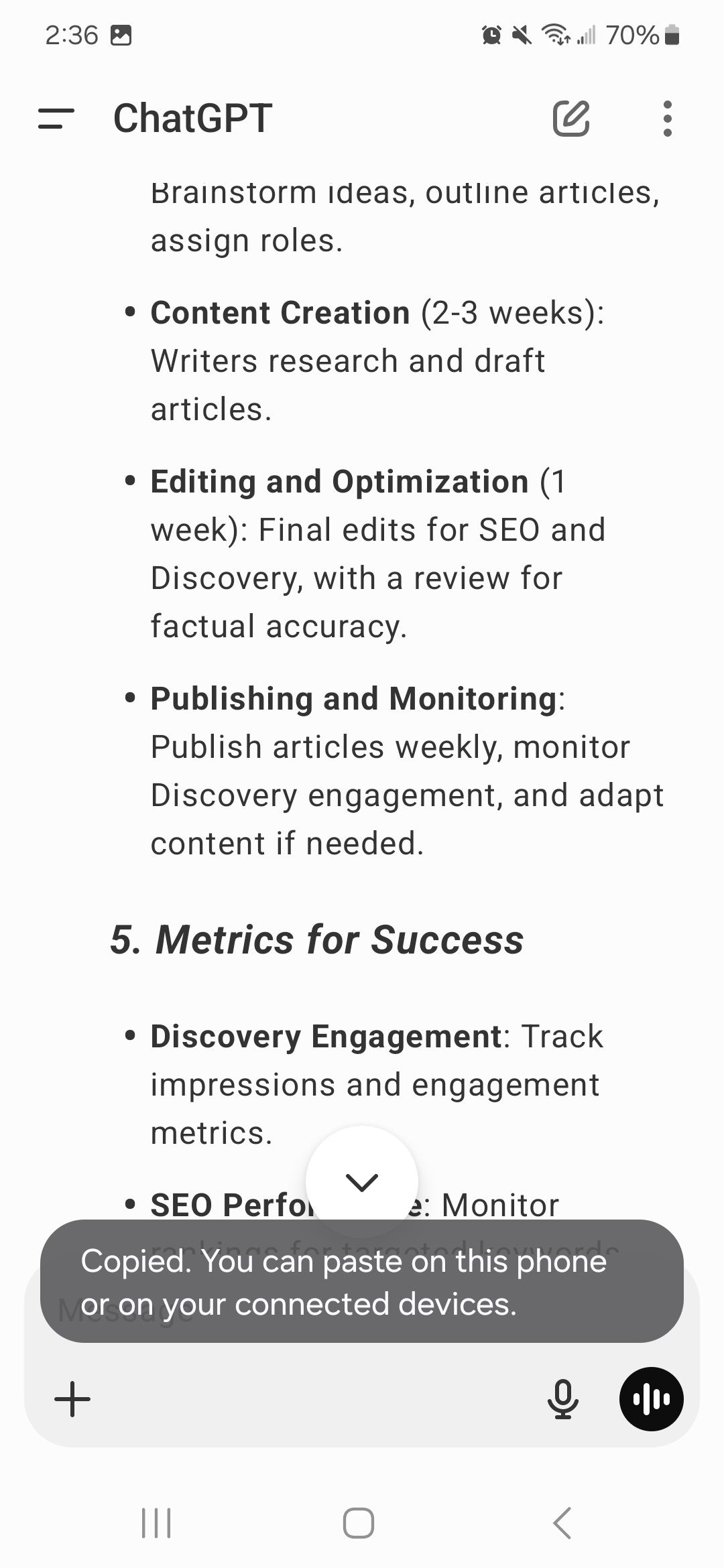
6 Acquire content creation help with ChatGPT
When creating content, you need to know the audience and how to fit the context around it. It isn’t always easy to understand how to grab the audience, especially the one you’ve tailored your content around. This is where ChatGPT can do the heavy lifting. It analyzes the context of your content and helps you generate great headlines for a platform. For example, you can ask it to create a few titles for X and Facebook. Here’s an example of using ChatGPT to come up with titles and headlines:
- Open ChatGPT.
- Use the prompt: I want to create a title for a topic relating to [subject], and I want to post this on [platform].
- Wait for ChatGPT’s response. You can ask it for a list if you want more options.
ChatGPT walks you through how to make a successful title or headline for the right platform. For example, when you write on X, you’ll consider the appropriate tags for your post. For Facebook, call-to-actions are better. When you’re unsure how to catch your audience’s attention on a given platform, try ChatGPT.
5 Brainstorm a new idea with ChatGPT
Jumpstart your creativity and imagination
Ideation can be challenging. You want to come up with a topic or idea that is relevant but unique to your story. Instead of Googling a list of issues, hone your ideas with ChatGPT. For example, you may want to discuss politics and how incorporating generative AI into a politician’s political agenda is a bad idea (or you can spin the story into something positive). When you aren’t sure which direction to take, here’s how ChatGPT can help:
- Open ChatGPT.
- Use the prompt: Help me brainstorm ideas for [topic] while adding [subtopics or key points] for a [content type].
- Wait for ChatGPT’s response. You’ll see a list of topic ideas broken down by key points.
Don’t rely on generative AI responses when you have questions about a topic. Instead, use it to point you to the right place. Even though ChatGPT breaks down the topic, ask it for primary and secondary sources to help with your research.
4 Summarize meeting notes with ChatGPT
Extract key points and information quickly
Whether you use a recording AI to transcribe notes from a meeting or have a long list of topics discussed, ChatGPT can summarize and re-organize meeting notes. You can ask ChatGPT to turn the notes into bullet points, place them into a table, or convert them into HTML to post online. You can also request the AI to order it as an action list. It’s helpful when you find meeting notes overwhelming but don’t want to miss important announcements and deadlines.
- Open ChatGPT.
- Use the prompt: Can you summarize these notes into [format]?
- Copy and paste the notes into the Prompt box.
- Wait for ChatGPT’s response. You’ll see a summary in the specified format. You can also ask ChatGPT to create a to-do list based on your meeting notes.
You can also do this for any notes. My personal favorite is using ChatGPT to re-organize my reading notes for work. You can also transform jumbled lecture notes into useable study notes.
3 Have ChatGPT translate documents and text
Skim through a document’s contents in any language
You might need to rearrange or share documents in multiple languages, especially if you work for a multinational corporation or team. But you may need help finding the correct one. You can ask ChatGPT to translate a document’s contents into a language you’re more familiar with.
- Open ChatGPT.
- Use prompt: Can you translate this into [language]?
- Copy and paste the contents into the Prompt box.
- Wait for ChatGPT’s response to finish the translation prompt.
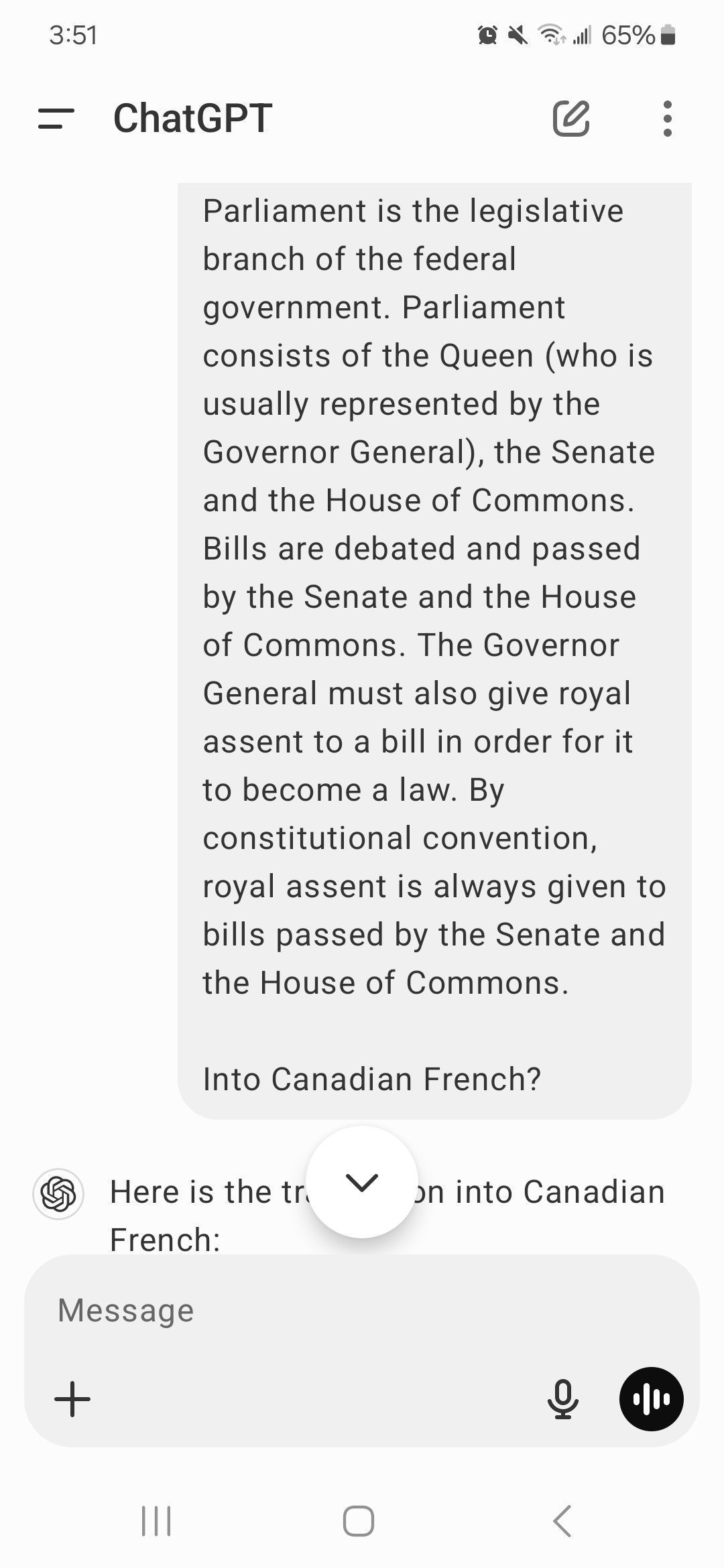
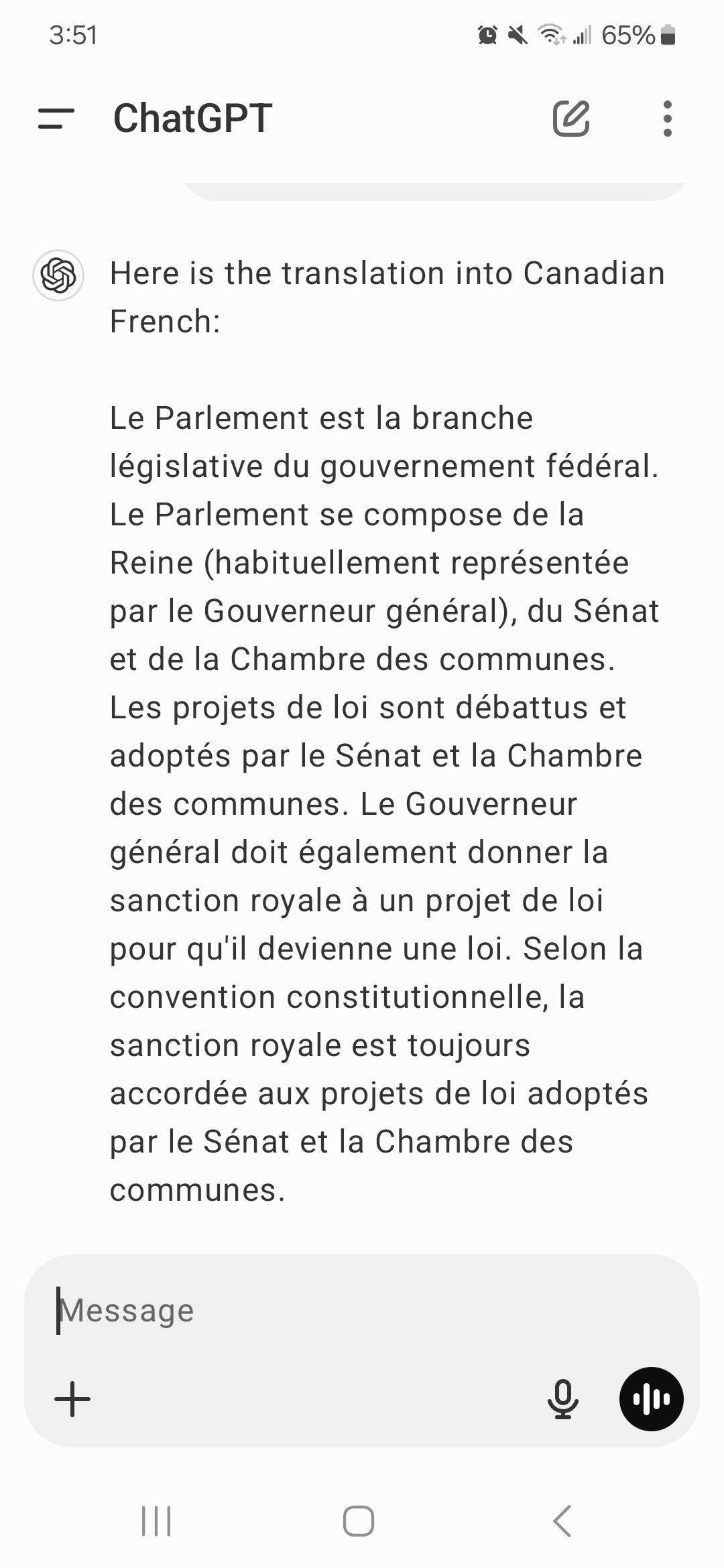
ChatGPT has translation capabilities (which are
better than Google Translate for context
), but they aren’t perfect. Use this for an approximation and ask a professional translator or your company for assistance with work-related tasks.
2 Use ChatGPT to draft work emails
Write a carefully crafted email to your boss
Writing emails can be time-consuming. Your job may entail drafting emails to clients, or you might need to communicate with other Workspace accounts as part of your workflow. ChatGPT can streamline emails for you by changing a stressed, curt tone into something job-appropriate when writing to your supervisor. Here’s how to take a load off by drafting emails with ChatGPT:
- Open ChatGPT.
- Use prompt: Can you write an email to [person’s name or job title]?
- Add important details to include inside the Prompt box.
- Wait for ChatGPT’s response.
- Copy the written template into a Compose Message page and change the text to meet your needs.
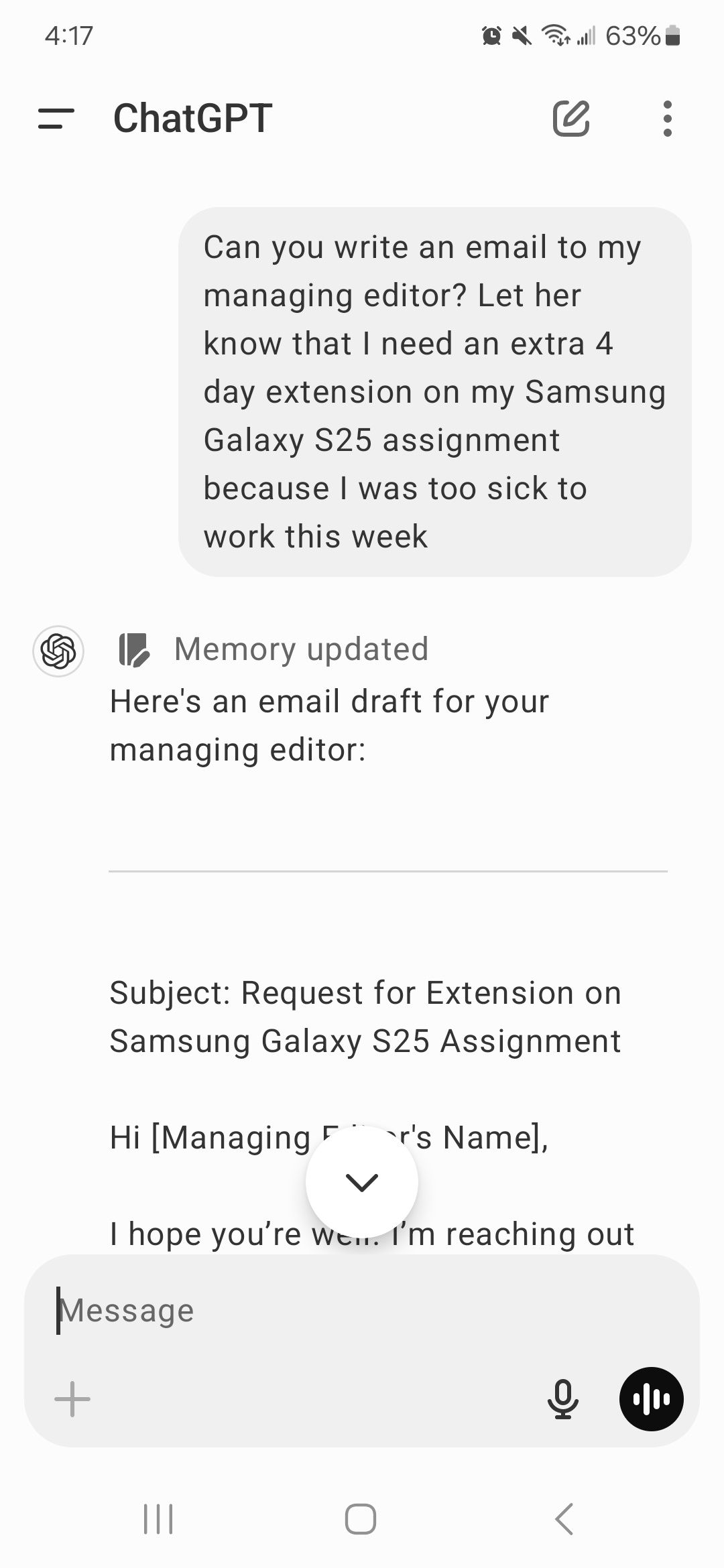
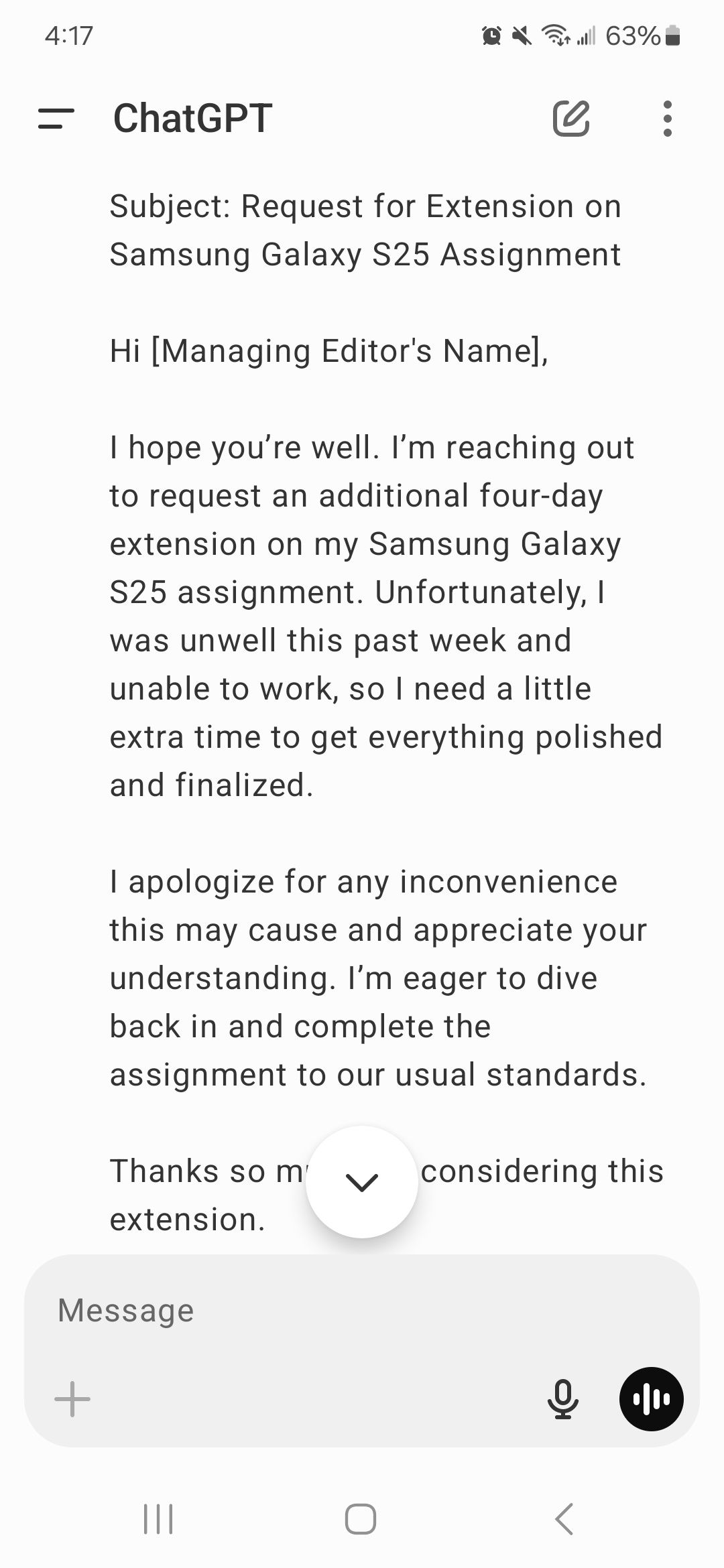
Review the OpenAI
privacy policy
before posting. Avoid sharing personal and confidential information while communicating with the AI chatbot.
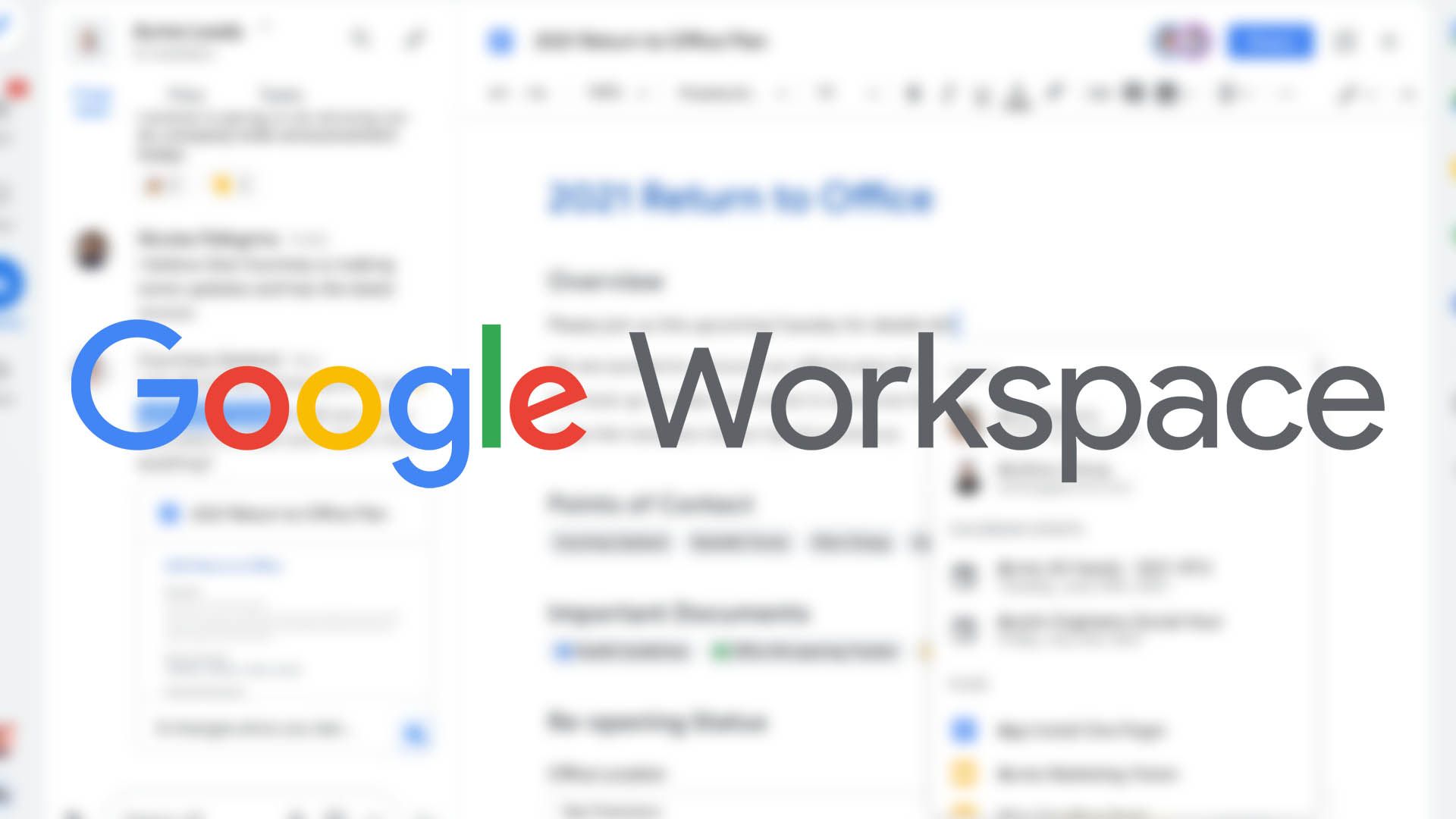
Related
Google Workspace: Everything you need to know about Google’s collaborative workplace platform
Google Workspace is essential for WFH and hybrid work
Compose cover letters with ChatGPT
Writing cover letters can be daunting when you’re a job seeker, especially when you must tailor them to the employer and job application. Use ChatGPT to compose a cover letter addressed to your prospective employer while adding specifics like personal goals for the role, characteristics, and other details crucial for winning the role.
Relying on ChatGPT to create cover letters isn’t the best practice. Instead, use the generated cover letter as a template.
1 Use ChatGPT for data analysis
Easily identify insights and trends
If you work with datasets daily, use ChatGPT for pattern recognition, querying, and creating summaries with tables and charts. ChatGPT lets you upload datasets in various formats, including Excel (.xls and .xlsx), Comma-separated values (.csv), PDF (.pdf), and JSON.
- Open ChatGPT.
- Enter this prompt: Can you tell me anything about this data?
- Add important details to include inside the Prompt box.
There’s a file upload limit. You can sign up for ChatGPT Plus to remove the file upload limit. Otherwise, you can only upload up to 20 files per GPT lifetime. The limit refreshes every 24 hours. There’s also a file upload size restriction of 512MB per file, and text and document files uploaded are capped at 2M tokens per file (which does not apply to spreadsheets). For CSV files or spreadsheets, files cannot exceed 50MB. Images have a 20MB per image restriction.
Usage caps include 10GB for an end-user and 100GB for an organization.
Understanding ChatGPT’s limitations
OpenAI’s large language model (LLM) lessens the load for routine tasks, reducing stress from work and school. However, ChatGPT isn’t perfect. The AI can make mistakes. It can also misunderstand prompts and claim it doesn’t know the answer but knows it when you tweak your prompt. ChatGPT can also be verbose with its output, so your employers and teachers will know if you use it. Depending on the AI chatbot can lead to ethical issues in the workplace (and school). If you incorporate ChatGPT in your work or school workflow, consider the limitations and the risks.

